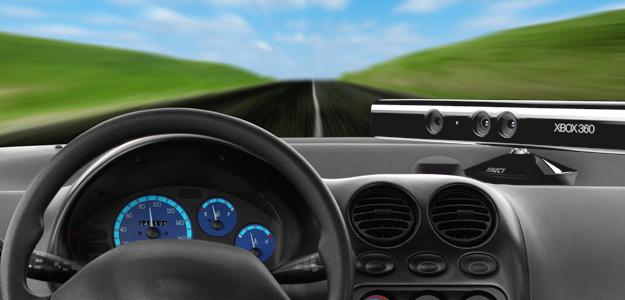 The automotive industry might be slow to its feet when it comes to true and groundbreaking innovation. But when it happens, or at least shows signs of happening, it’s no less exciting than the latest Silicon Valley smartphone or 100-inch ultra-mega-high-definition 4080p television.
The automotive industry might be slow to its feet when it comes to true and groundbreaking innovation. But when it happens, or at least shows signs of happening, it’s no less exciting than the latest Silicon Valley smartphone or 100-inch ultra-mega-high-definition 4080p television.
While up and coming autonomous and semi-autonomous technology wants drivers to relinquish control, gesture-based technology, similar to what Microsoft is currently researching and utilizing with its Xbox Kinect , is already making its way to vehicles, albeit high end ones.
But the Redmond-based giant isn’t the only company looking to incorporate Kinect-like controls into the driving experience. Wired reports that automotive tech supplier Harman is currently developing a system that would not only recognize gesture-based controls, but facials cues as well. Traditional operations like turning on the stereo, raising the volume, and skipping a track on your playlist would all be facilitated by the blink of an eye, the tilt of a head, or a tap of the steering wheel, respectively.
If it all sounds remotely familiar that’s because it is. Both General Motors with its Cadillac CUE system and BMW’s new iDrive Touch interface are slowly incorporating similar touch-based controls in upcoming vehicles.
So how does it work? Not all that different than your standard Kinect, really. The system relies on an infrared sensor that watches for certain pre-programmed gestures. When these gestures are captured the corresponding function is then activated.
Sounds easy enough right? Unfortunately the theory doesn’t always translate as well as we would like, as anyone with experience using voice or gesture-based controls can attest to. Plus, given that the average person blinks 16 times per minute we’re left wondering how effective or accurate such a system could actually be.
Despite our skepticism, Harman claims that the system is currently undergoing thorough testing and will be capable of filtering unintentional gestures and facial expressions. And if it doesn’t — well…we can think of only one gesture we’ll be making in response.


